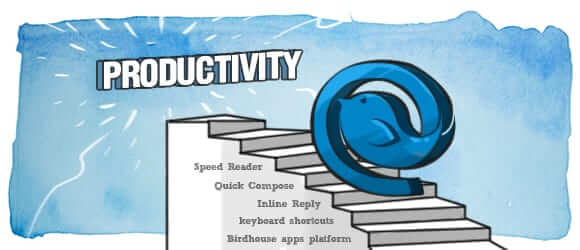Workplace productivity is a fundamental cause of concern for many corporations. According to a recent study carried out by research firm Basex; workplace interruptions cost US businesses over $650 billion a year. A primary cause of these interruptions, and subsequent lack of workplace productivity, is inadequate organisation of emails. In 2010, a study revealed that corporate users received and sent an average of 110 emails a day, and moreover, a substantial 52% of US workers agree with the statement that; “The quality of my work suffers at times because I can’t sort through the information that I need quickly enough”. In an effort to remedy this dilemma, listed below are several processes that you can implement within your daily routine to significantly improve your email organisation. By following these measures, employees can alleviate their email-related stress, and corporations can profit from improved workplace productivity.
Brevity is key
If you allocate specific and concise headlines for each of your emails, you will be able to locate them more rapidly when needed. Moreover, these specific subject headings will clearly convey your intentions to email recipients, which in turn will enable them to understand your aims and reply more quickly.
As Steve Jobs famously declared; “the fact is people don’t read anymore”. The likelihood is that your email recipients will simply skim read your email, so you need to ensure you have clearly outlined your purpose and objectives within the first two lines of your email. Try using bullet points or numbered formats which will capture your colleagues’ attention and permit them to quickly ascertain your intentions and respond accordingly.
Above all, if it takes you longer to write an email than it would to converse with your client or colleague, then call them instead. This will help you resolve your queries more quickly and more productively.
Allocate yourself a time of the day for checking email
Sporadically checking email throughout the day is often an inefficient use of time. To remedy this, allocate yourself a specific time of day for checking your email. This will enable you to focus on other important tasks throughout the day, as well as encouraging you to deal with your emails rapidly and efficiently.
A research study carried out by GetResponse in 2010 analyzed 21 million US email accounts to determine the best engagement time for sending emails. The study revealed that sending emails during readers’ top engagement times of 8 a.m. – 10 a.m. and 3 p.m. – 4 p.m.increased their average open and response rates by 6%. A separate study by Pure360supported these findings, demonstrating that between the hours of 2 p.m. and 4 p.m. ,“consumers remain focused on work” and respond to their emails more efficiently.
A great way to ensure you stick to these allocated times is to turn off all notification sounds and alerts for the arrival of new emails. This will prevent you from being distracted by incoming emails and enable you to streamline your email processing time.
If executed correctly, this process can encourage better interaction with both your colleagues and also your client base. IT support consultants Premier Choice Internet enthuse about the possibilities of these efficient email strategies, stating how they can permit you to glean more exclusive “interaction with your existing customers base, those which already trust you, have bought from you and are most likely to buy from you in the future”. By organising your email system so that you can interact with clients and colleagues quickly and comprehensively, you can establish trust and improve both your individual professional credibility as well as the overall reputation of your company.
Organise your email folders
Create folders for all areas of your work and filter emails to their relevant categories. By assigning folders for particular projects, you will be able to access important information easily and rapidly, thereby facilitating a more streamlined email process. Currently, there exist several online email productivity tools which permit users to establish and sustain a comprehensive sorting process for their emails. Mailbird are currently developing Wingman; a function which endeavours to enable users to track “your emailing speed and reports it back to you, gives you personalized advice to increase your productivity based on how you manage email”.
This filtration process is also highly useful for dealing with spam emails. Over 71% of worldwide email traffic is spam-related, so by directing all of your spam to a particular folder will enable you to avoid this interactive inconvenience and focus primarily upon important work-related emails.































